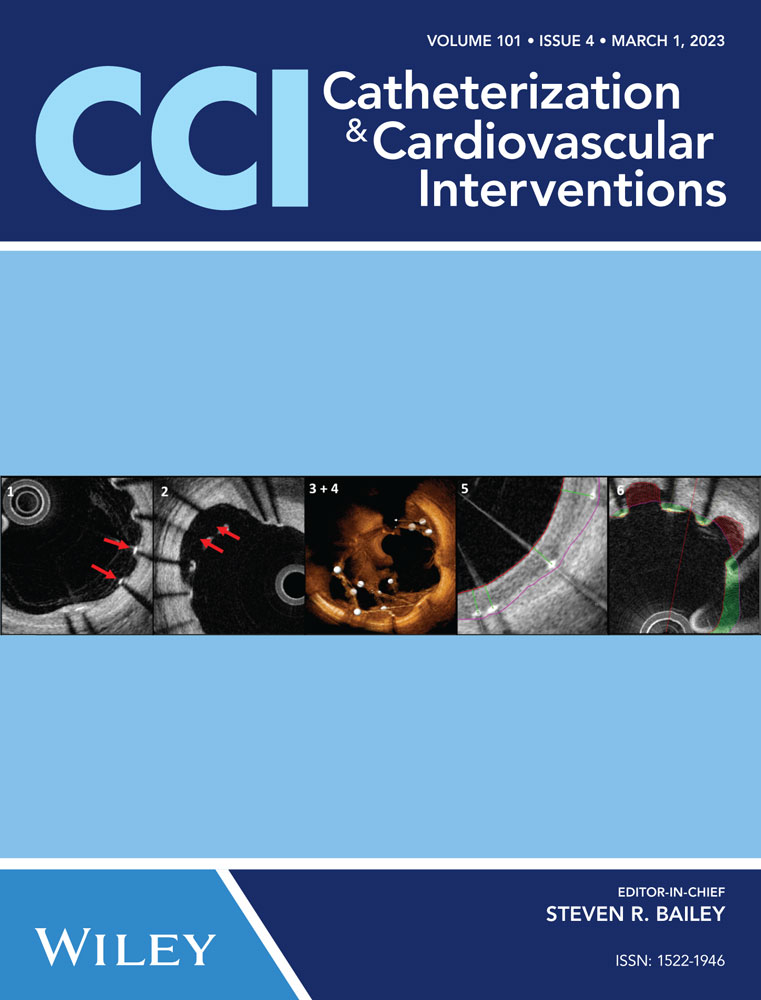Better together? Maybe not with CTO-PCI
Key points
-
Double-scrubbing or multioperator chronic total occlusion (CTO) percutaneous coronary intervention (PCI) has been postulated to enhance procedural success and efficiency in complex procedures.
-
The present study shows no difference in success rates with single- or multioperator CTO-PCI, and less efficiency in terms of time, contrast, and radiation despite single-operators having more complex cases.
-
Multioperator CTO-PCI provides ongoing training and experience in complex procedures rather than any benefits in procedural success or efficiency, and should be utilized mainly when additional training is required.
Percutaneous coronary intervention (PCI) for chronic total occlusions (CTOs) remains one of the most complex procedures in the cardiac catheterization laboratory. CTO-PCI requires more resources in terms of balloons, stents, wires, guides, and cath lab time, and more variability from case to case and operator to operator. CTO-PCI has a reported failure rate of 12%–30%, and a major complication rate of 3% including perforation.1 CTO-PCI procedures can be very prolonged, and fatigue and cognitive biases can potentially impact upon operator judgment.
For all of these reasons, routine double-scrubbing of multiple operators (MO) for CTO-PCI could have significant benefits and has been recommended by some programs.2 A second operator could make useful suggestions, monitor progress and operational parameters, help speed the preparation of devices, and observe for complications. Theoretically, a MO team could be more efficient by making the best choices. If a complication such as a perforation occurs, obtaining access for a second guide, mechanical support, or pericardiocentesis could be accomplished more rapidly with potentially lifesaving results. Finally, for those facilities with limited CTO volume overall, or with an operator that is less experienced with CTO-PCI, MO procedures can help “spread the wealth” and experience.
How does this pan out in real-life? In this issue of Catheterization and Cardiovascular Interventions, Karacsony and Sandoval et al.3 analyzed the large, international multicenter Progressive Global Registry for the Study of Chronic Total Occlusion Intervention (PROGRESS CTO) registry for insights on MO CTO-PCI. Among 9296 CTO-PCI procedures performed across 37 expert centers, 85% were single-operator (SO), while 15% were MO. Fellowship trainees were not counted as operators. Surprisingly, the authors found no difference in technical success rates (86% in both groups) or complications (2.2% vs. 2.4%, p = 0.6) despite SO cases being significantly more complex with higher J-CTO scores (2.38 ± 1.29 vs. 2.28 ± 1.20, p = 0.005) and PROGRESS CTO scores (1.13 ± 1.01 vs. 0.97 ± 0.93, p < 0.001). Paradoxically given their lower complexity, MO procedures took longer (137 vs. 112 min, p < 0.001), utilized more contrast (230 vs. 210 mL, p < 0.001), and had higher radiation exposures (air kerma 2.32 vs. 2.10 Gray, p < 0.001).
Interestingly, looking only at success with the most complex cases (PROGRESS CTO scores of 3 and 4), there is a statistically significant difference favoring SO over MO (78% vs. 66% p = 0.013 for Score 3, and 74% vs. 40% p = 0.022 for Score 4). So in the most complex cases where you might expect MO to be most helpful, having MO was actually associated with a higher risk of failure. This effect was not seen with higher J-CTO scores and the subgroup is smaller, so this result could be the play of chance, but certainly does not support a benefit of having MO.
What could explain the similar efficacy but inferior efficiency of MO CTO PCI compared with SO? One can imagine that a second operator may feel the need to repeat or persist in a failed strategy (i.e., wire escalation) rather than move efficiently on to another. Discussions and debates among the operators could similarly reduce efficiency, like having too many cooks in the kitchen. Given the nonrandomized nature of the study, however, one partial explanation was that the operators were different in MO versus SO cases. SO cases were performed more frequently by a high-volume operator (>60 CTO-PCI cases annually) than in MO cases (35% vs. 19%). These high-volume operators were able to handle more complex cases in a more efficient fashion.
According to a Medaxiom survey, 56% of practicing American interventional cardiologists report performing CTO-PCI, yet the median operator only performs 3 of these procedures annually, and even those at the 90th percentile only perform 12 procedures annually,4 likely the simplest antegrade wire escalation procedures. Thus, while the “low-volume” operators (<30 annual CTO-PCI) in this study performed less efficiently than the “high-volume” ones, they are all far ahead of the general interventional population on what is a long learning curve. Given this long training curve, the authors appropriately note that MO CTO-PCI may be useful to facilitate maintenance and growth in PCI skills, even if it does not provide direct benefits to a particular patient. Such cases are best labeled as training cases and require the presence of a single highly experienced supervising operator, rather than two physicians of equal rank.
Nevertheless, the analysis from Karacsony and Sandoval et al. pours cold water on the intuitive idea that two heads are always better than one. Experience and tactile feedback are critical for CTO-PCI success, and these may be best demonstrated in SO procedures. At those institutions where MO is routine or mandated for CTO-PCI, the present results may change practice toward a more efficient SO procedure. Given the high costs of time and matériel for CTO PCI procedures, and professional reimbursement that is only 25% higher than for routine PCI before splitting,5 any such efficiency gains would be welcome.
CONFLICTS OF INTEREST STATEMENT
Dr. Seto has received research grants from Philips, Acist, and Pfizer, and is a speaker for Terumo, General Electric, and Janssen, and is a consultant for Frond Medical, Cordis, and Cathworks. The remaining author declares no conflict of interest.




